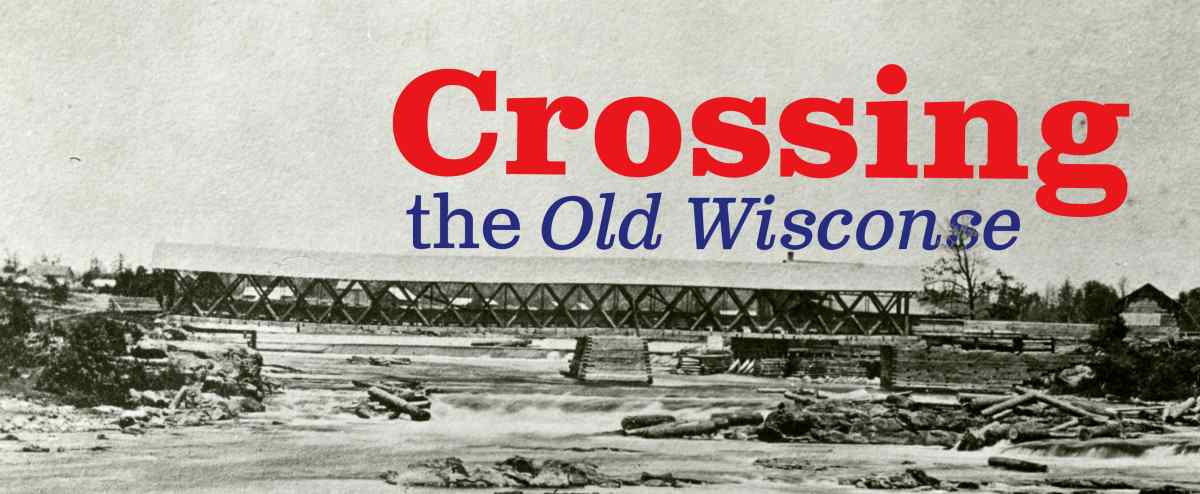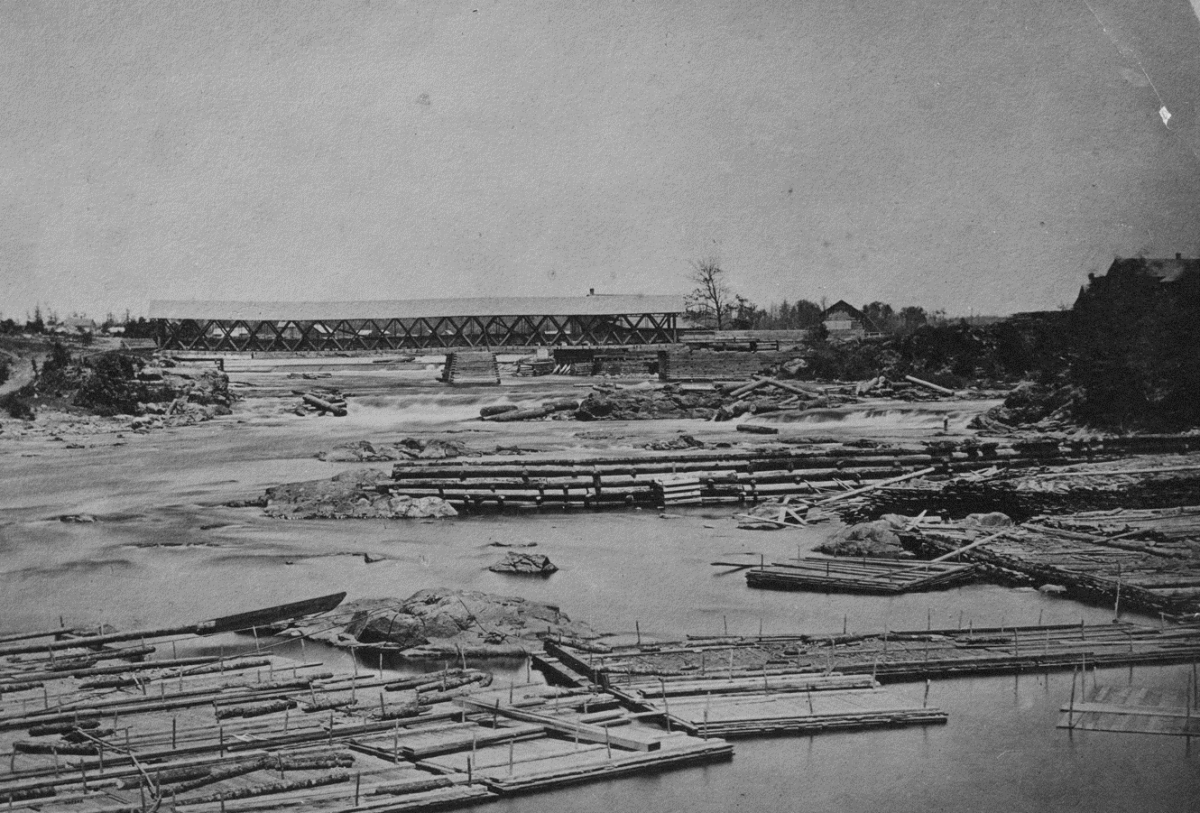Wausau's Early Bridges

In the 21st century, safe bridges and river crossings are something taken for granted. Today in Wausau thousands of people will cross the Wisconsin River and its backwater sloughs without a second thought but there was a time that a safe crossing was no guarantee. The first bridges to serve a community are almost always homemade affairs built by locals with the experience, or even just the gumption, to erect a bridge with whatever materials are locally available. While these bridges were absolutely vital links to the outside world, they weren't always safe or reliable.
Who was first?
The very earliest white inhabitants of Big Bull Falls called Clark’s Island home. It was on the island in the summer of 1839 that George Stevens would choose to locate his mill and it was there that the settlement of Big Bull Falls first took root. Given that the entirety of the settlement was confined to an island in the middle of an at times treacherous river some sort of bridge had to have been erected shortly after the Stevens Mill went up. There is a total lack of documentation for this early bridge but it can be theorized to have crossed the slough, or backwater channel, of the river between Clark’s Island and the Eastern bank. This would make sense because it was the narrower and calmer of the two channels and because, at least in the very earliest days of Big Bull Falls, there was nothing but uninhabited forest on the Western bank. The bridge was most certainly wooden and would likely have been extremely simple in design; either a small covered truss bridge or, more likely, a simple piling bridge supported by roughly hewn tree trunks driven into the riverbed.
The Perley Dodge Bridge
The earliest documented bridge and one which is often (incorrectly) cited as being the first in Wausau was built in 1855. In that year, the Marathon County Board paid Perley Dodge, a local farmer and mill owner, $1,815 to erect a bridge from Clark’s Island to the West bank of the Wisconsin River.1 Beginning around Christmas 1855 Mr. Dodge completed the work over the course of about three months.2 While this bridge certainly was not the first bridge in Wausau it does hold the distinction of being the first bridge to unite the east and west banks of the Wisconsin River (even if it did have some help from the already extant Slough Bridge.) The bridge also holds the distinction of being the first “Falls Bridge” as locals quickly dropped the original name of “Main Bridge” in favor of the familiar moniker.3 The design of this bridge was fascinating, it consisted of three unequal spans two of which were supported by pilings, but the third, and largest span was supported by a kingpost truss which would have been ill-suited for the task at hand. Perhaps most interestingly of all the bridge had no roof leaving its delicate wooden structure exposed to the elements. It is no wonder then that the bridge required almost constant repairs.4

The Dodge Falls Bridge pictured circa. 1860. Clark's Island is on the Right.
Credit: MCHS Photo Collection
The Dern and Young Bridge
The Perley Dodge Bridge stood until 1866 when a combination of its poor condition and heavy spring rains led to its collapse.5 The following year the village board paid contractors Adam Young and John Dern $1,533 dollars to erect a replacement Falls Bridge.6 The new bridge was a covered two-span affair of the Town Lattice Truss design.7 The new design did away with all but one of the pilings and, due to the superior spanning capability of the lattice design, was much better suited for its location. Amazingly, despite its complex structure and massive size, the bridge was built almost entirely without iron nails. Records indicate that the only iron nails used were in the shingles of the roof.8 Despite what some might consider to be primitive construction the Young and Dern Bridge lasted an impressive 16 years. During this time it weathered the flood of 1880 and numerous collisions with log rafts including one in 1881 that was estimated to have contained over 60 million board feet of timber.9

The Dern and Young Bridge Circa.1870 spanning a much more built up Big Bull Falls.
Credit: MCHS Photo Collection
For as robust as the bridge was by 1883 it was outdated and worn out. A city inspection in 1882 had resulted in its being condemned and scheduled for replacement.10 In its place would rise, not another rustic covered bridge, but a modern, prefabricated truss bridge of iron and steel. The days of Wausau’s early bridges had ended.
< Previous Story Glossary Main Index Next Story >
1. Anonymous, “Puzzling Over Wausau’s Early Wagon Bridges.”
2. "Puzzling Over Wausau's Early Wagon Bridges"
3. "Puzzling Over Wausau's Early Wagon Bridges"
4. "Puzzling Over Wausau's Early Wagon Bridges"
5. “Wausau’s bridge history spans over the years.” Wausau Daily Herald (Wausau), September 25, 2001
6. “Puzzling over Wausau’s Early Wagon Bridges”
7. “Covered bridges once popular.” Wausau Daily Herald (Wausau), March 6, 1988
8. "Covered bridges once popular"
9. “Puzzling Over Wausau’s Early Wagon Bridges”
10. "Puzzling Over Wausau's Early Wagon Bridges".
